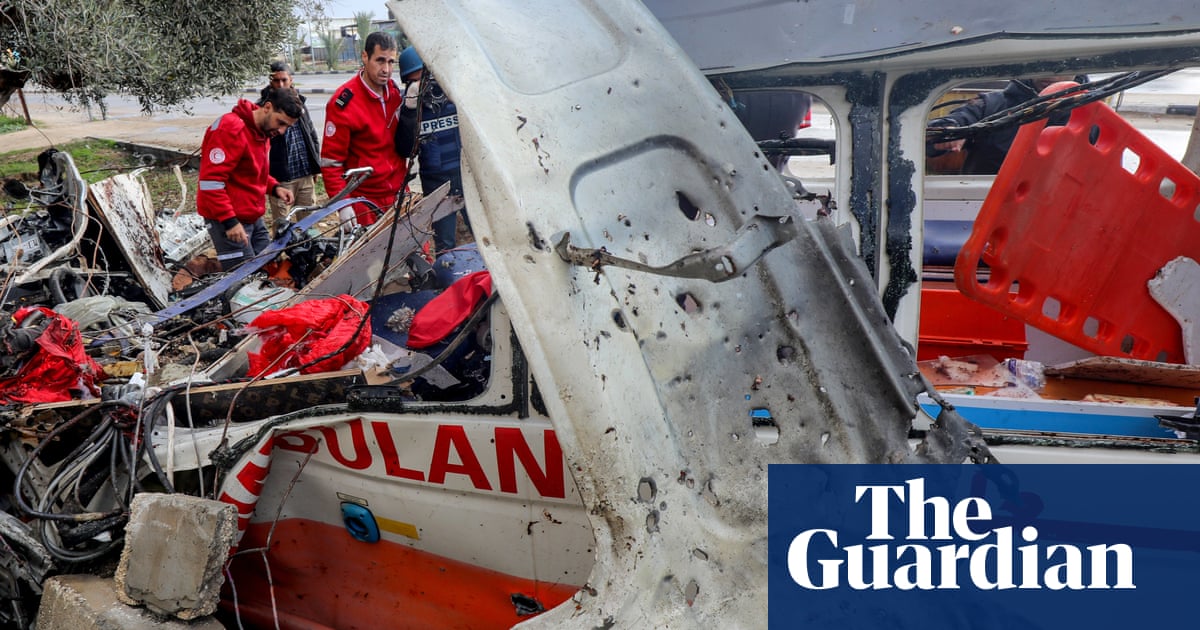Last year saw more than 3,600 attacks on health workers, hospitals and clinics in conflict zones, a record figure reflecting “new levels of horror”,a new report has found.
The total is 15% higher than in 2023 and includes air, missile and drone strikes on hospitals and clinics, as well as the looting and takeover of facilities and arrest and detention of health workers.
More than a third of the attackstook place in Gazaand the West Bank, but there were also hundreds recorded in Ukraine, Lebanon, Myanmar and Sudan.
Leonard Rubenstein, the chair of theSafeguarding Health in Conflict Coalition(SHCC), which authored the report, warned that the rise comes at the same time as “attempts by perpetrators to limit legal protections for healthcare and civilians in war”.
He citedsanctions imposed on international criminal court(ICC) staff by US president Donald Trump for having charged Israelis with war crimes, and a 2023 law passed by Russia’s Duma thatcriminalised cooperationwith the ICC.
Rubenstein said: “On average, in 2024, healthcare came under attack 10 times a day across the world’s war zones. Each of these assaults brings terror, trauma, and in too many cases, injury, destruction and death.
“Attacks on healthcare undermine the ability to care for people when it is needed most, in war.”
There were 3,623 recorded incidents in 2024, including 1,111 where health facilities were damaged or destroyed, 927 where health workers were killed, 473 where health workers were arrested and 140 where health workers were kidnapped. Most of the incidents – 81% – were attributed to state actors.
More than 55% of health worker arrests in 2024 were made by the Israel Defense Forces (IDF) in Gaza, the West Bank and East Jerusalem. The SHCC points to reports ofphysical and sexual abuse inside detention facilities. Nearly half of the deaths were reported from Lebanon, and most were emergency medical responders killed during the IDF’s Operation Northern Arrows.
Explosive weapons are used in an increasing proportion of attacks against healthcare, the report warned, up from 36% of incidents in 2023 to 48% last year. Much of the rise was accounted for by the increased use of drones.
The figures in the report are probably an undercount, it said, due to the difficulty of collecting accurate information during conflict.
Christina Wille, director of Insecurity Insight, who led the report’s data collection, said: “There has been a complete erosion in the respect for international humanitarian law and the responsibility to protect healthcare in conflict.”
She called for a “decisive response”, adding: “Justice must be pursued and accountability enforced.”
The report calls on UN member states to “collectively reject efforts to reinterpret international humanitarian law that undermine their purpose of protecting healthcare in armed conflict” and “end impunity by encouraging investigations, data sharing, prosecutions through the ICC and empowering monitoring bodies”.
It also calls for support for declarations and treaties that would strengthen protections for civilians in armed conflicts, and a review of military doctrines and protocols to put greater emphasis on safety for healthcare.
